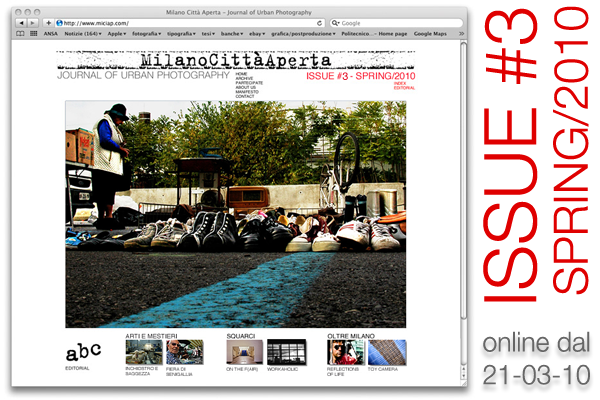Orti urbani
To learn more...
View the pdf version of this issue
The intervention of the municipality of Milan regarding the study and regulation of urban allotments is a relatively recent procedure in Milan. The first studies of this sector came about in the 1990's and were conducted to search, understand and institutionalize a system that was until then disorganised and anarchic. From a study conducted in 2005, results conveyed the surface area of the urban allotments in the Milan area to be equivalent to 1,800,000mq (most of this spaces were illegal) and from communal data collected in 2010, the surface area of "legal" allotments only measured in slightly higher than 100,000mq. The birth of these urban allotments in Italy is then to be considered as a spontaneous phenomenon, and in Milan, the phenomenon was definitely due to the enormous migration that, between 1955-1971, saw approximately 9 million Italians move from agricultural regions in the South to industrial areas in the North. We can hypothesise that these men, after having chosen to work in factories, weren't able to neglect their deep-rooted "farming ways" and they converted urban spaces, within the area in which they worked, into little allotments. Still now, many allotment owner are retired individuals from the South. They arrived as youth in Milan to find work and all of whom now consider themselves 100% Milanese.
Originally, urban allotments constituted a real alternative to the industrial production system, and they continue to do so in developing economies. They came to exist in Europe from the end of the Second World War and they became essential for citizens to utilise in order to survive the devastation of the War. In a 2009 publication, entitled "Food for the Cities", the FAO identified that urban and urban-peripheral agriculture offers real potential for those metropolises found in countries with high levels of poverty, reporting that in 2008 for the first time in history, the urban population had surpassed the rural population.
The interpretation of "regular" urban allotments in the Western industrialized society is completely different. The needs that push citizens of places like Milan, Paris or Frankfurt to rent 50mq of land in which to pass their spare time are different. Maybe they are trying to re-stabilise contact with their primordial instincts and the land. Or they want to embezzle citizen soil as a reaction to the feeling of "not belonging", something that many people can relate to when they are part of a large city. It seems to me that a reaction to the metropolitan system comes into play. For how the production is organised, it's sometimes difficult to understand one's role within the system and how to contribute to the community/city. One would want to demonstrate that they are still capable of surviving by literally producing food to eat and nourishing their loved ones. Even if they really don't need to. Moreover, to further confirm the absolute urban character of this phenomenon, in those Mediterranean-European countries where the traditional agriculture of growing foods is most prevalent, the phenomenon is more difficult to implant. And it's obviously absent in zones that are truly rural in all European states.
This is the most interesting paradox; the "gardeners" of the urban allotments in European cities want to satisfy those typical needs that city residents have, like going to the gym or to the theatre. Representatives from various national entities and organisations that deal with spreading the urban allotments culture, reunited in Poland at the XXXV International Congress of Allotment and Family Gardens, published a communal resolution which affirms the necessity of political intervention by the government to incentivise urban agriculture. The resolution argues that "urban allotments take on a social mission: they are a meeting place in which to build relationships between adults and the young, families, people from different generations, the unemployed and professionally active people that come from different social or national backgrounds. [...] They are an essential part of staying healthy, physically and mentally [...] real fruit and vegetables, cultivated in their own gardens enrich their diets and menus. The contact with... nature and the creativity of a garden can stimulate the senses. Relationships and friendships help combat loneliness."
In France, Germany, England and Northern Europe, where regularised urban allotments have been around for much longer than they have been in Italy, the processes are more institutionalised in comparison to ours. The "Capital Growth" program, sponsored by the communal administration in London, promises, through its slogans, to create 2,012 new allotments in 2012.
Networks, associations of consumers and entities of public administration organise funds and lotteries and also offer services for the keepers of urban allotments. In London they have the London Allotment Network, in Paris there is the Fédération Nationale des Jardins Familiaux et Collectifs and Berlin is home to the Kleingarten bund. A research centre on "Urban Agriculture and Food Security" exists as well as the "Office International du Coin de Terre et des Jardins Familiaux" with its headquarters in Luxemburg which coordinates various national entities.


